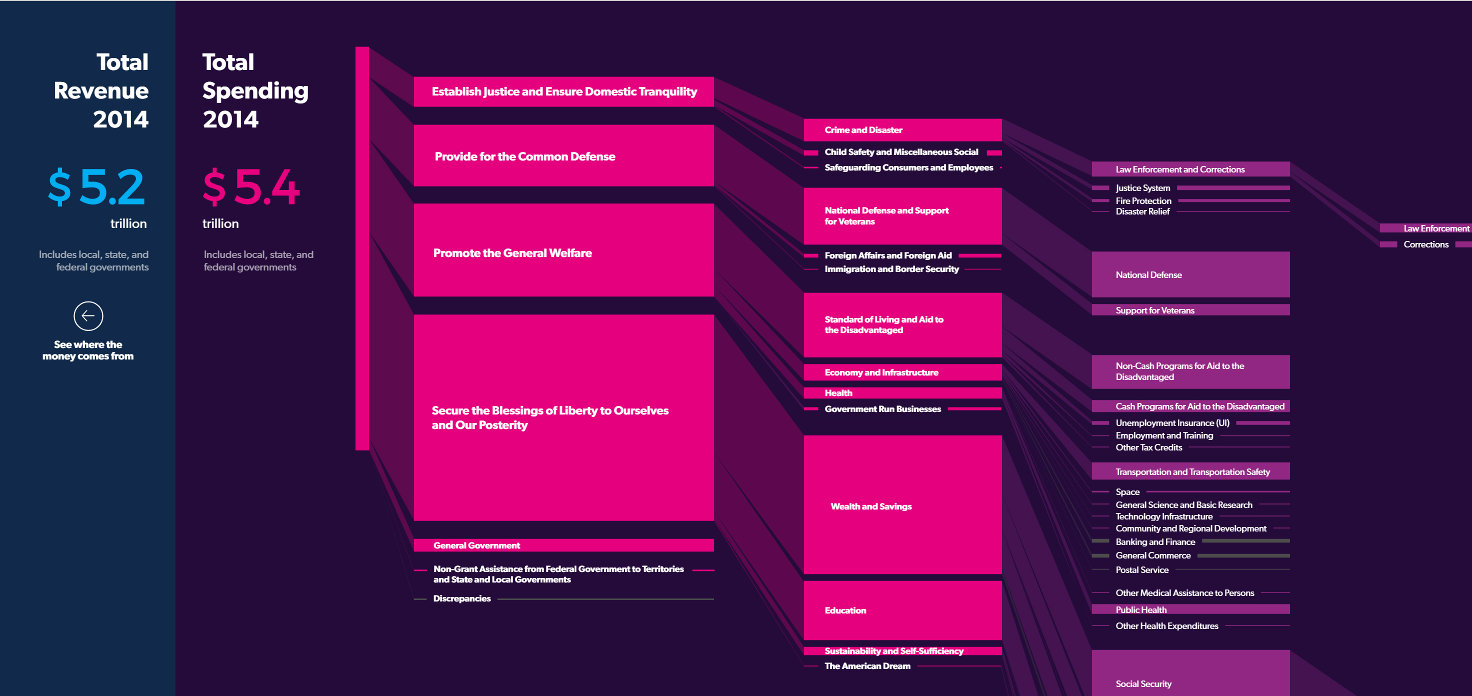If you ever wondered where all your tax dollars were going, Steve Ballmer is here to help shed some light on the answer. This week, the former Microsoft CEO and current owner of the LA Clippers launched USAFacts.org to serve up everything you’d want to know about the nation’s revenue streams and expenditures. It covers roughly the last 30 years and tries to do it in as nonpartisan a way as possible.
“In a sense, what you want a citizen to be able to do is to go look and say, what do my tax dollars go for? How much taxes do people pay? What is the money going to get used for? And what kind of outcome?” Steve Ballmer said in a TedxTalk.
The site labels itself a “data-driven portrait of the American population, our government’s finances, and government’s impact on society.” Working with a small team of economists, journalists, and researchers over the course of several years, Ballmer aimed to make public a sort of financial performance report for the government. It’s just like how private companies annually file a financial performance report called the 10-K to the SEC.

It’s a noble mission but the site is only joining a handful of earlier websites pushing to make government more transparent and public data more accessible. Data.gov is one such example launched in 2009 under the Obama administration which aimed to give researchers and analysts a centralized repository of government figures.

Still, what separates this site from the rest of the pack is the priority it puts on presentation in order to convert mountains of data into comprehensible bits of knowledge. Information is laid out using a framework based on verbiage from the Constitution’s Preamble. Slick interactive graphs and tables start you off with a bird’s eye view and gives the more curious user freedom to sleuth around and drill down to their heart’s content. Unlike other sites, Ballmer is clearly aiming for the everyday user here and he’s starting off with an introduction that assumes nothing about our prior knowledge of how government actually works.
For a peek into how you could approach this trove of information, let’s look at one of the more detailed slides showing economic mobility based on the parent’s income level, as dissected by race.
The slide doesn’t go any further than to simply present the facts – and there are a lot of facts here to digest. It’s up to the viewer to interpret what the correlation between one’s income level and parent’s income level could mean. Only the slide’s title with its ever-so-subtle inclusion of the phrase “The American dream” nudges you to place the facts inside a larger framework and ask yourself whether the numbers live up to the ideal.
But this is where the slide ends its commentary. If you’re looking to dig further into more context and some of the drivers, you’ll have to look elsewhere. And in that case, you’re also probably the kind of entrenched power-user who needs much more research than what this site is willing to cover anyway.
USAFacts wants to be a buffet of key metrics framed in a way that makes sense intuitively, if not operationally. Especially now, when the information coming out of both news outlets and the Oval Office are increasingly being criticized as falsehoods and nonpartisan facts seem sometimes missing from public discourse, this site could find its niche in arming us all to formulate more data-driven arguments while also learning a little something about where the buck is going.











